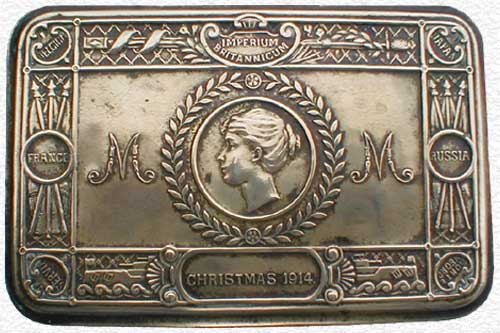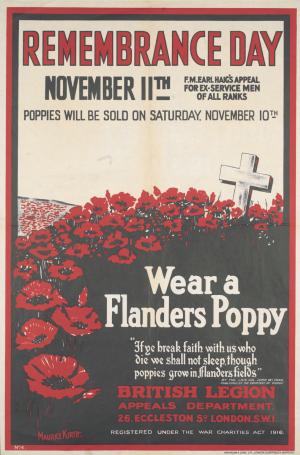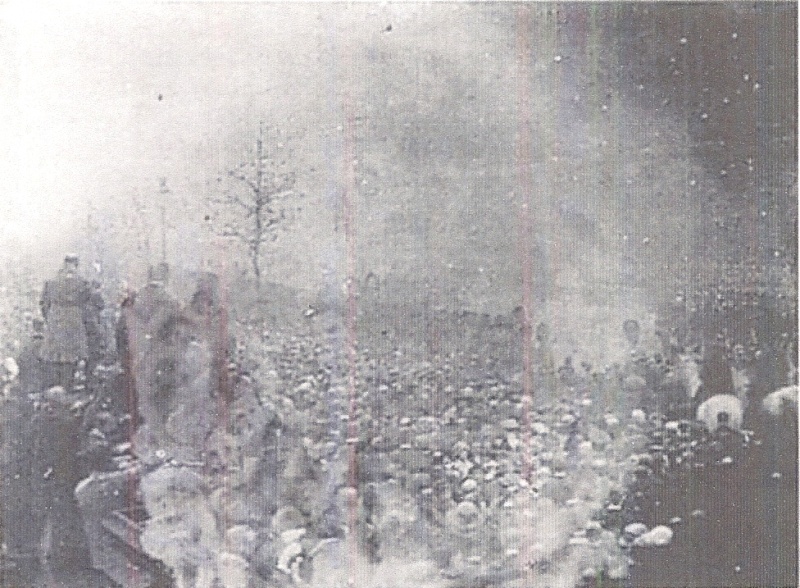 |
| "Our Boys Need Sox." American Red Cross Poster, 1914-1918. Library of Congress. |
I like to knit. As winter draws near, I find it comforting to gather up my yarn and needles and work on something that will create warmth. Naturally, I can't help but wonder about knitting in the Great War.
For we can knit socks for our soldier boys and keep the fires burning at home...
Knitting was an important--nay, essential--craft during the Great War. No mere hobby, the need for knitted items on the front sounded a call to duty for those at home. Take a look, for instance, at the American poster above. While it hails from across the pond, it makes clear the necessity for crafting on the home front, regardless of location. Knitting was also a frequent motif in propaganda, songs, and other aspects of popular culture. Socks, in particular, for soldiers were a noble project for crafters to undertake--they could help keep a soldier's feet warmer and drier in the trenches, where the dreaded "
Trench Foot," a condition caused by prolonged exposure to the mud, water, and cold of the trenches was striking many and even leading to amputations in dire cases.
A knitted garment of one kind or another takes on and transfers a certain energy from its maker to its wearer, I believe, and there's something incredibly moving about the sort of touch that a homemade sweater or pair of socks permitted. From the hands of a wife, mother, grandmother, sweetheart, sister, or benevolent stranger to the body of a soldier, knitwear crossed the divide between home and battlefield.
Of course, one can usually count on
Siegfried Sassoon for a grimmer meditation:
O German mother dreaming by the fire
When you are knitting socks to send your son
His face is trodden deeper in the mud
In a way, the devastation of Sassoon's image of a mother knitting for a son she doesn't realize is dead, takes its force in part from knitting's own powerful tactility--the way it seemed to facilitate the comfort of touch and warmth akin to that of actual physical contact. That this German mother will not share the warmth of home with her son, and that her crafting thus has, as Sassoon paints it, no purpose, is tragic and upsetting.
I appeal to the Presidents of all the needlework guilds throughout the British Isles to organize a large collection of articles for those who suffer on account of the war...
---"Her Majesty's Appeal," published in The Times, 10 August, 1914.
Knitting and purpose were strongly bound together for women at home during the Great War. The craft was taken very seriously from the earliest days of battle. In 1914 just after the outbreak of fighting, the London Needlework Guild was christened "
Queen Mary's Needlework Guild" when it gained the patronage of the Queen. Through the efforts of the guild, thousands of garments were sewn and knitted and sent to soldiers, refugees, hospital patients, prisoners, and others in need.
Lord Kitchener even "knit [his] bit" during the war, devising a smooth seaming technique for the toes of soldier's socks that, to this day, still
bears his name.
The
Red Cross in Britain and
America were, of course, major forces in knitting on the homefront. Below, a page from an instruction manual from the British Red Cross, meant to guide volunteers in making the most essential items for soldiers.
 |
| A page from a British Red Cross Needlework and Knitting Instructions Book for Volunteers, ca 1914-1918. |
I will "cast off," to use knitter's parlance, for now, but it is certainly fascinating to spin the history of knitting in the Great War. Even from this initial look, knitting's material and symbolic impact during the war are clear. In the Great War, crafting took on a patriotic cast, and offered one way for those at home to feel that they were closer, one stitch at a time, to those on the front.
© Fiona Robinson
---
Sources and further reading:
U.S. Library of Congress Posters Record for "Our Boys Need Sox":
Sheet Music at Bruce County Military Museum:
McMaster University "War Songs" Exhibition, with war song lyrics:
Wikipedia: "Trench Foot":
Wikipedia: "Siegfried Sassoon":
Wikipedia: "Lord Kitchener":
Kitchener Stitch Tutorial:
Sassoon's "The Glory of Women" from Counter-Attack, 1918:
Queen Mary's Needlework Guild history:
Red Cross Museum, Britain:
American Red Cross Museum:
British Red Cross Needlework and Knitting Instructions for Volunteers:































